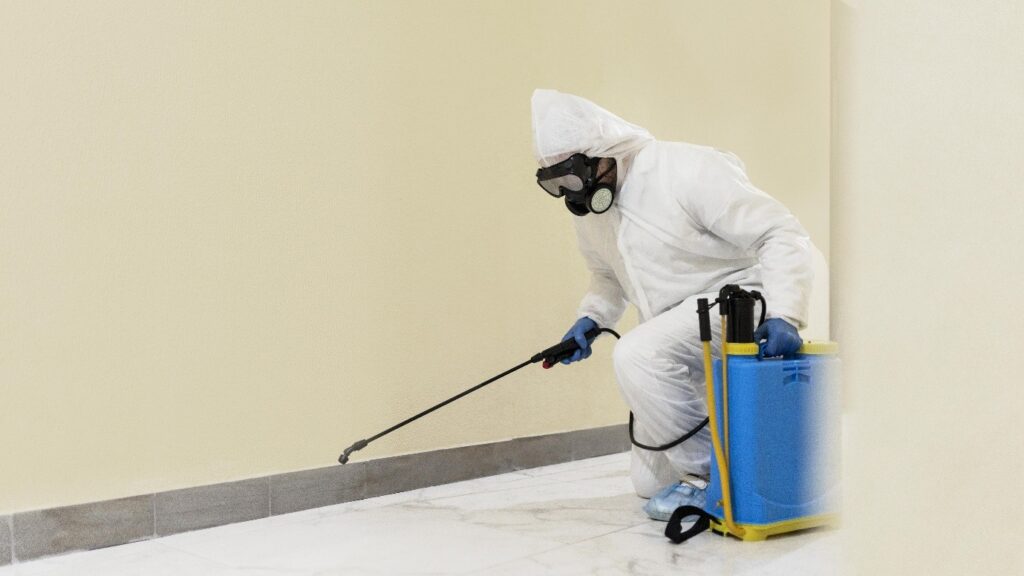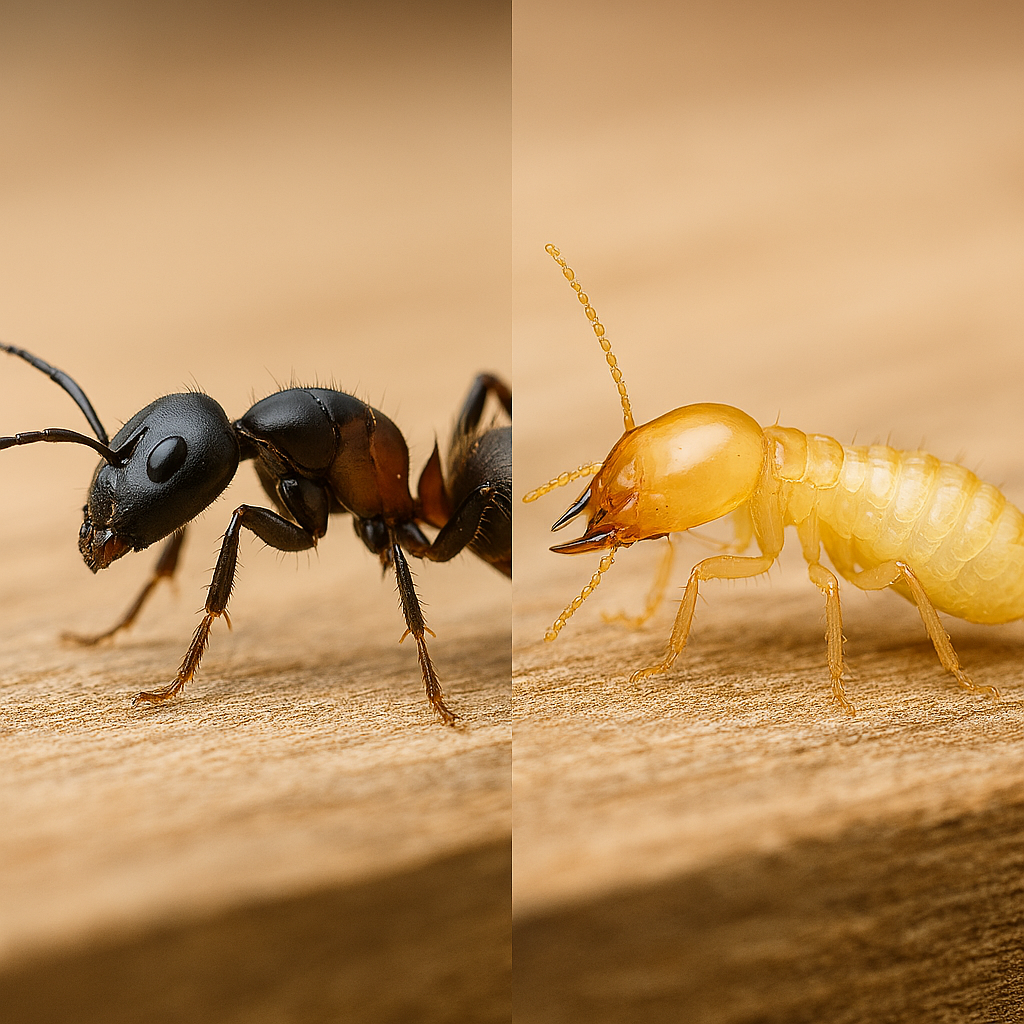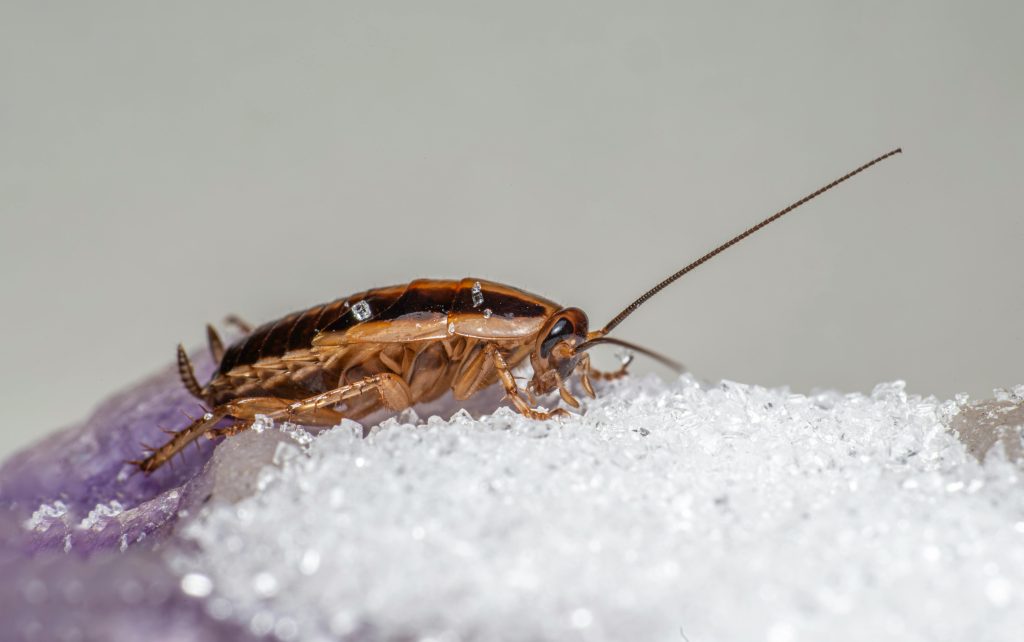Carpenter ants are among the most common structural pests in North America. Unlike termites, they don’t eat wood—but they do excavate it to build their nests, which can lead to serious damage over time. Whether you’re a homeowner, property manager, or pest control professional, understanding their biology and behavior is key to keeping infestations at bay.
What Are Carpenter Ants?
Carpenter ants belong to the genus Camponotus, with over 1,000 species worldwide. In North America, the most common species is the Black Carpenter Ant (Camponotus pennsylvanicus), known for its large size and destructive nesting habits.
Key Characteristics:
- Size: ¼ to ⅝ inch long
- Color: Black, reddish-brown, or a combination
- Waist: Pinched (unlike termites)
- Antennae: Elbowed
- Wings (in swarmers): Front wings longer than hind wings
Biology & Life Cycle
Carpenter ants undergo complete metamorphosis:
- Egg – Tiny, oval, and white
- Larva – Legless and grub-like
- Pupa – Transitional stage before adulthood
- Adult – Worker, queen, or swarmer
Queens can live for years and lay thousands of eggs. Colonies typically peak in late spring and summer, with swarmers emerging during warm, humid conditions—often after rainfall.
Nesting Behavior
Carpenter ants prefer moist, decaying wood to establish their nests. They don’t consume wood but carve out smooth tunnels and galleries to house their colony.
Common Nesting Sites:
- Tree stumps and logs
- Wooden decks and porches
- Wall voids and insulation
- Window frames and door casings
- Roof eaves and crawl spaces
Colonies often consist of a primary nest (with the queen) and satellite nests (housing workers and brood), making detection and elimination more challenging.
Signs of Infestation
Spotting carpenter ants early can prevent costly repairs. Look out for:
- Frass: Sawdust-like debris near wood surfaces
- Rustling Sounds: Audible movement inside walls
- Winged Ants: Especially near windows or light sources
- Night Activity: Workers forage after dark
Swarmers: The Reproductive Force
Flying ants, or alates, are reproductive members of the colony. Their sole purpose is to mate and establish new colonies.
- Males die shortly after mating.
- Females shed their wings and become queens.
- Swarming typically occurs in spring or early summer.
Swarmers are often mistaken for termites, but their elbowed antennae and narrow waists are distinguishing features.
Prevention Tips
Keeping carpenter ants out starts with eliminating their ideal nesting conditions.
Top Prevention Strategies:
- Remove damp or decaying wood around your property.
- Fix leaks in roofs, plumbing, and gutters.
- Seal cracks and gaps in siding, windows, and foundations.
- Store firewood off the ground and away from the house.
- Trim vegetation that touches your home.
Treatment & Control
DIY methods can help, but large infestations often require professional intervention. Sani IQ Pest Control can help you eliminate Carpenter Ant colonies & keep your property safe. Contact Sani IQ
Options Include:
- Baiting Systems: Target foraging workers to spread poison through the colony.
- Non-Repellent Insecticides: Allow ants to carry treatment back to the nest.
- Dust Treatments: Effective in wall voids and crawl spaces.
- Professional Inspection: Essential for locating hidden satellite nests.






